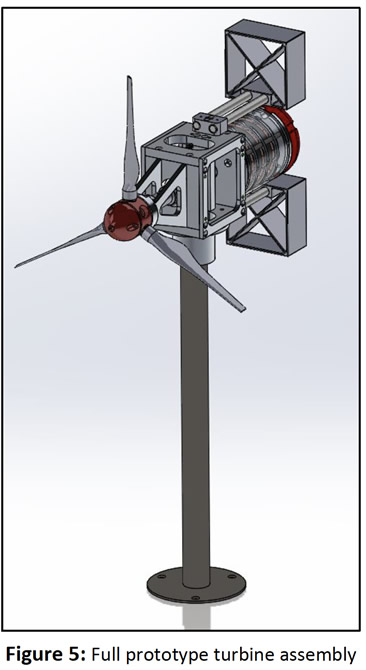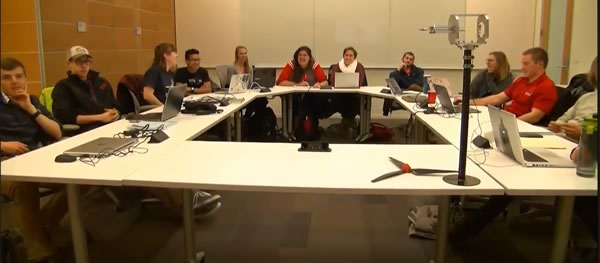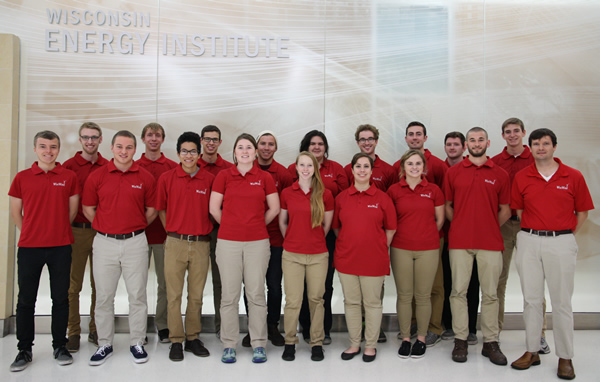A team of students from the University of Wisconsin-Madison is using HOMER® Pro to create economic models for their entry in the U.S. Department of Energy (DOE) “Collegiate Wind Competition.” In this prestigious biennial competition, the DOE challenges interdisciplinary teams of students to solve a complex problem involving wind energy.
There are usually sub-teams of business and engineering students who not only need to come up with a successful technology solution, but devise ways to bring it to market profitably. Each year the DOE identifies a new challenge and this year it is:
“Research and design a turbine for a grid scenario with a high contribution of renewables and be able to operate in an islanded mode.”
This year the University of Wisconsin-Madison team bet on the rapidly growing demand for electric vehicle (EV) charging stations in the US as the basis for their business model. Two student entities formed a partnership: WiscWind, which had previous experience in DOE competitions, would handle the technical challenges, and re:charged systems, which would develop the business case.

Charlie Oster, an undergraduate at the University of Wisconsin-Madison and the CEO of re:charged systems, said that this year, the DOE required that wind turbines in the competition be capable of “islanding” or cutting themselves off from the main electric grid. “Because of that, we went right to the idea of creating microgrids, and HOMER Pro was the obvious tool for us to use in modeling the relationships between engineering and economics.”
Microgrids for EV Charging Stations
First, the Wisconsin business team looked a wide variety of microgrid applications, including islands, hospitals and other businesses. But, because of the enormous projected growth rate of the EV market, they ultimately chose to design a chain of EV charging stations along the US interstate highway system in windy midwestern states. According to Bloomberg Energy Finance, the U.S. will reach two million EV sales per year by 2027 and 10 million by 2035. The EV infrastructure market is expected to expand just as rapidly, achieving a compound growth rate of 46.8% through 2025.
Meanwhile, wind, which is now generating electric power in 40 out of 50 U.S. states, is the cheapest source of new electric generation in 14 states, according to the Danish wind power corporation Vestas. Most of these top wind states are in the US heartland, where in the case of five states, wind generates more than twenty percent of each states’ overall electricity requirements. It’s a perfect place for EV charging stations powered by hybrid microgrids.
Technical Challenges, Financial Opportunities

For the DOE competition, re:charged systems drew inspiration from a small wind turbine initially designed – in an earlier DOE wind competition – to power cell towers in India. But the new turbine was quite different, adapted for a roadside microgrid powering an EV charging station, as well manufacturing constraints that would be faced by a small startup company.
The new, updated turbine design features small, lightweight blades suitable for shorter towers and lower cut-in wind speeds, and the use of magnets instead of a gearbox in the motor, preventing too much torque and increasing efficiency; finally the whole system will use control systems that ensure that the power curve is stable and predictable across a wide range of wind speeds.

While the technical team worked on its new turbine design, aided by 3D printers and new, high-strength materials, the business team looked for ways to generate profits with their startup. Having downloaded a list of 10,000 U.S. EV charging stations from the National Renewable Energy Laboratory, the team narrowed its focus to about 45 locations located mostly across the Great Plains. The indicators that the team considered as strong potential for successful microgrid development included high prices for electricity supplied by utilities through the main power grid, strong wind and solar resources, and realistic siting feasibility.
Modeling EV Charging Stations with HOMER Pro
Ultimately the Wisconsin team chose five representative sites to model in Colorado, Oklahoma, Nebraska, Texas and California, out of the 45 locations included in the business plan. All of them were in very windy environments except the site in southern California, which had too good a solar resource to ignore, along with high electricity prices. For each site, re:charged systems chose to simulate microgrids that included wind, solar, batteries, and inverters, along with electricity provided by the grid.
Oster said they estimated the electric loads by calculating how many EV fill-ups would occur in a given day (requiring somewhere between 4,000-8,000 kWh of electricity), then simulated a load curve to estimate when the demands would spike for an EV charging station. They applied the wind and insolation databases, (which are of course included in HOMER Pro), and calculated the price for grid-supplied electricity as a state-specific average of commercial tariffs. Finally, they added the components – their specially designed wind turbine, generic solar, battery and inverter resources – and let HOMER Pro find the most economical systems.
The final overall system design included a load controller or sub-meter that would allocate power resources evenly among the charging vehicles and regulate power when the electric generation exceeded the amount needed by the charging station. In these cases Oster said, the HOMER Pro software would calculate how much they would get back via net metering, if they were to feed energy back into the grid.
The Microgrid Value Proposition for EV Charging Stations
After modeling EV charging stations with HOMER Pro, the Wisconsin team found that in four cases out of five, grid-supplied electricity was slightly cheaper than energy produced by their microgrid. Only in one case did the hybrid microgrid come out cheaper than the grid. But says Oster, “This was a very small difference, they were almost the same. And we also know that clean energy produced by a microgrid has a more complex value proposition. It’s not just the cost of energy but the microgrid provides the EV charging station owner a hedge against likely increases in grid electricity costs. Also, there’s a marketing benefit because electric vehicle owners tend to be environmentally conscious, so they will choose green energy first. The last value proposition is that we believe electric vehicles offer an important hedge against rising gas prices, which can happen at any time. Lastly, these microgrids provide resilient energy that mitigates against grid failure and high demand charges in the future.”
Conclusion? We think the University of Wisconsin team did a great job on this project; we’re happy HOMER Pro was able to help them with their calculations, and we wish them luck in the competition which is May 8, 2018 in Chicago!
